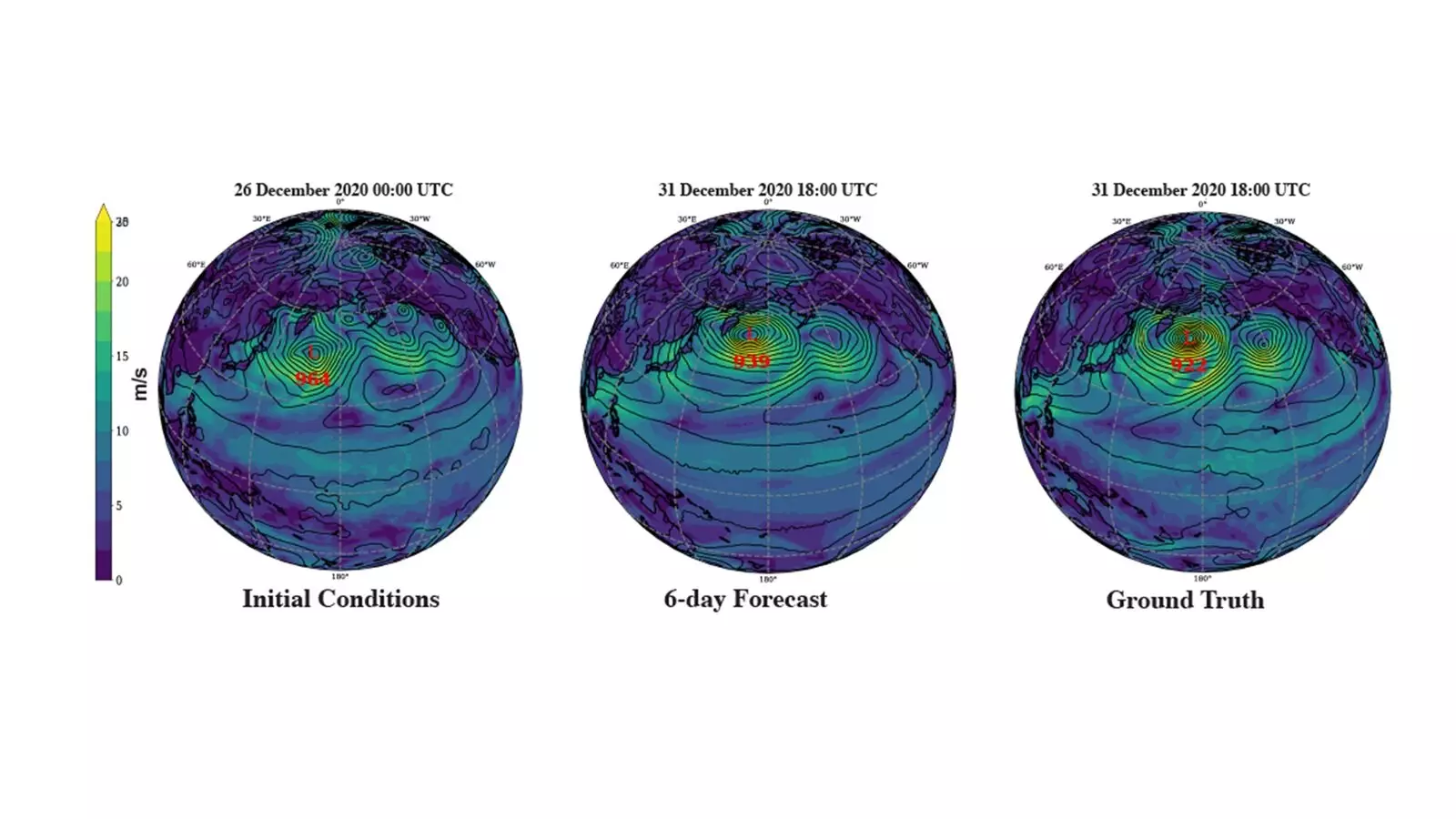Weather forecasting has long relied on traditional numerical models that utilize complex equations of thermodynamics and fluid dynamics. These equations, designed to simulate atmospheric processes, are indispensable to various sectors of the economy, particularly in aviation and shipping. Although such models have served us well, they require enormous computational resources, typically necessitating the use of supercomputers to analyze and predict weather patterns accurately. This approach, while effective, has inherent limitations concerning speed and scalability, raising the question: can we achieve greater efficiency and accuracy?
The Emergence of AI in Weather Prediction
Recent advancements in artificial intelligence (AI) have sparked promising conversations about improving weather forecasting accuracy through innovative approaches. Researchers from leading tech companies like Nvidia and Google are developing robust AI models, termed foundation models, aimed explicitly at this domain. However, a notable advancement is emerging from the collaboration between the U.S. Department of Energy’s Argonne National Laboratory and academic institutions like the University of California, Los Angeles. This partnership is pioneering new methodologies that could significantly enhance forecasting capabilities while reducing computational requirements.
Scientists involved in this research have discovered that, in many cases, these AI-driven models can yield forecasts that rival those generated by traditional methods—even predicting weather patterns reliably beyond a seven-day horizon. This breakthrough could potentially transform our ability to plan and respond to impending weather events.
Redefining Tokens for Weather Prediction
What sets the new paradigm apart is the conceptual shift in how data is processed. Traditional models rely on numerical data to comprehend atmospheric behaviors. In contrast, foundation models introduce the notion of “tokens” not as linguistic fragments but as visual data representations. In essence, the research team analyzes spatial-temporal data through images—essentially visual patches that represent various atmospheric conditions such as humidity, temperature, and wind speed.
Argonne scientist Sandeep Madireddy explains the significance of this approach: the use of images allows for a better understanding of spatial relationships and interactions within weather data. By analyzing these visual tokens, researchers can derive meaningful insights without being confined to high-resolution inputs traditionally required for accuracy.
The Cost Efficiency of AI Weather Models
Another compelling advantage of these advanced models is their ability to deliver reliable forecasts using lower-resolution data. For decades, the prevailing notion within meteorology has been that greater resolution correlates with improved predictive power. However, as Rao Kotamarthi, an atmospheric scientist at Argonne, notes, this quest for higher resolution typically comes with a steep computational cost. The emerging AI methodology offers a refreshing alternative: comparable predictive results achieved through an innovative lens of coarse-resolution input, potentially democratizing access to weather forecasting technologies.
Challenges Ahead: Climate Modeling and AI
While AI shows tremendous potential for optimally handling immediate weather forecasts, using the same framework for long-term climate modeling presents unique challenges. Climate analysis involves a broader time frame and requires the ability to adapt to rapidly changing conditions, such as increasing carbon levels and evolving energy budgets on Earth. According to Troy Arcomano, an environmental scientist at Argonne, the transition from a relatively stable climatic regime to one that is increasingly volatile complicates numerical predictions.
Though the theoretical underpinnings suggest foundational models can also be applied to climate forecasting, Kotamarthi highlights that there exists greater motivation in the private sector to innovate within the realm of weather prediction. In contrast, climate modeling initiatives remain predominantly within the scope of national laboratories and universities dedicated to addressing challenges for the public good.
The Advent of Aurora: A Catalyst for Future Innovations
Recognizing the potential of these AI models, the rollout of the Aurora supercomputer at Argonne represents a significant leap toward refining and expanding these capabilities. As the first exascale computing machine, Aurora is equipped to manage complex and intricate models at remarkably high resolutions. This technological upgrade is poised to be a game changer, enabling researchers to leverage AI more effectively to address the complexities inherent in weather forecasting and climate modeling.
The promising developments in AI-driven weather prediction represent not only an academic revolution but also an economic imperative. As weather forecasting becomes increasingly accurate and efficient due to these technological advancements, sectors reliant on precise meteorological data can expect to see enhanced operational efficiency and improved safety measures. With ongoing innovations, the future of weather forecasting is looking brighter than ever.

